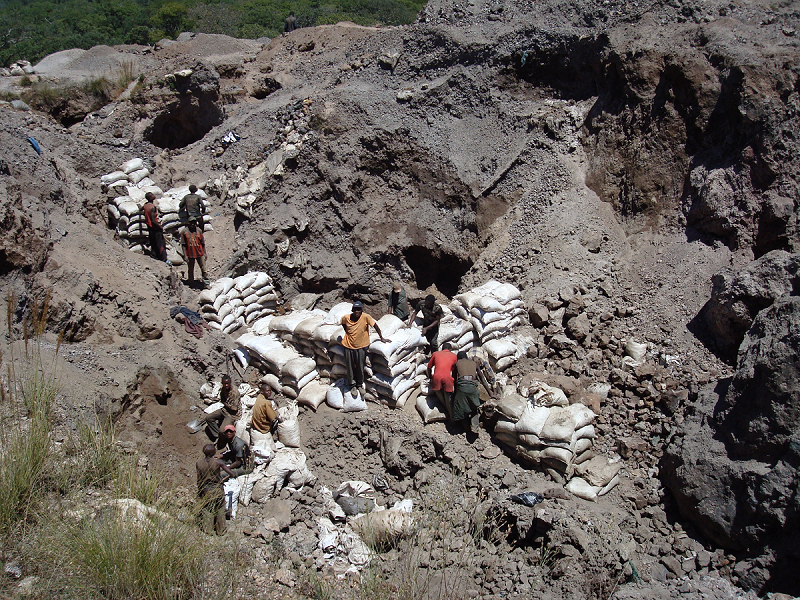Gecamines (the Congolese state-owned mining company) and its joint venture partner, Dino Steel International (owned by Glencore’s long term business partner, Groupe Bazano), sold the Chabara mine permit to the Glencore subsidiary, Mutanda Mining, in February 2015 because they claim it was “overrun in a permanent way” by independent diggers and therefore difficult to develop.[1] But in 2007 Chabara, which is located in Kawama about 50 km from Kolwezi, had been designated an artisanal mining zone. Artisanal miners, who were entrenched on other prime industrial sites, were helped by large mining companies to move peacefully to Kawama. With funds from the World Bank and DfID, Kawama was supposed to become a model Artisanal Mining Zone. Instead, by 2010 with over 15,000 people crammed into a makeshift camp with little sanitation and few services, it had become a hell-hole. The concession reverted to the control of Congolese traders who brought in machinery to remove surface material. The artisanal miners quickly found themselves in the usual trap of being forced to sell their produce to the companies at very low prices. Local authorities and security agents took their cut of the proceeds by imposing ‘taxes’ for the removal and transportation of minerals. In 2011 SEMAK (a body representing artisanal miners) expressed concern about the dangerous and insanitary conditions at Kawama.
Glencore Plc shareholders should demand to know what management intends to do now to alleviate the immediate difficulties faced by the artisanal miners and their families, many of whom have lived in Kawama for well over a decade. And, in view of the Congolese Government’s lamentable track record, set out the company’s vision of a possible long-term, sustainable solution to an intractable problem.
[1] GECAMINES COMMUNIQUE SUR LA SITUATION DE LA JV CHABARA 26 Juin 2015
Photo credit: T. De Putter 2010, Royal Museum of Central Africa, Tervuren, Belgium.

